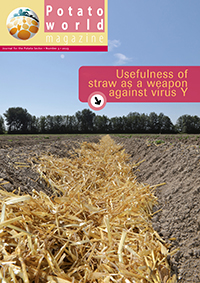Already a subscriber? Activate your premium account

Potatoworld Magazine

Different outlets have different optimal dry matter concentrations of tubers. The dry matter concentration of table potatoes in general is lower than that of chipping and crisping potatoes whereas that of starch potatoes is highest. The latter is relevant as less transport of water is cost effective and also reduces the quantity of liquid waste in the starch factory.
Decision support aims at 19.5% dry matter (specific gravity, sg 1.077) below which the crop is not accepted for chips (French fries) production but not above 25% (sg 1.103). For crisps, the minimum requirement is 20% dry matter (sg 1.079) without a limit. For starch production, the grower is paid per kg of starch delivered to the factory as inferred from the crop under water weight.
Strategic decisions on dry matter concentration
Strategic decisions regarding dry matter concentration are the crop type to be produced from a ware crop to a starch crop and the limitations set by the environment. Farmers decide where to grow the crop by selecting the soil type (clay soils result in higher dry matter than sandy soils) and the temperature through the cropping season in relation to the altitude above sea level (higher temperatures result in lower dry matter concentrations).
Tactical decisions
Tactical decision support to influence the dry matter concentration is the selection of the variety, that has a low or high dry matter concentration. The initial nitrogen and potassium fertilization rates also are tactical decisions as more of both nutrients are associated with lower dry matter contents.
Dry matter influenced by operational decisions
Operational decisions that influence the tuber dry matter concentration concern supplemental nitrogen dressings, irrigation scheduling (more water at the end of the season reduces the dry matter concentration) and harvest planning as the dry matter concentration increases with crop longevity. Crop longevity, albeit not extending the available length of the season, is increased by adequate crop protection which is an integral part of decision support to direct the dry matter concentration of the tubers.
The tuber dry matter concentration is specified by market requirements and is influenced by genotype, environment and crop management.
Events
©2015 - 2024 Potatoworld | Webdesign and realisation COMMPRO